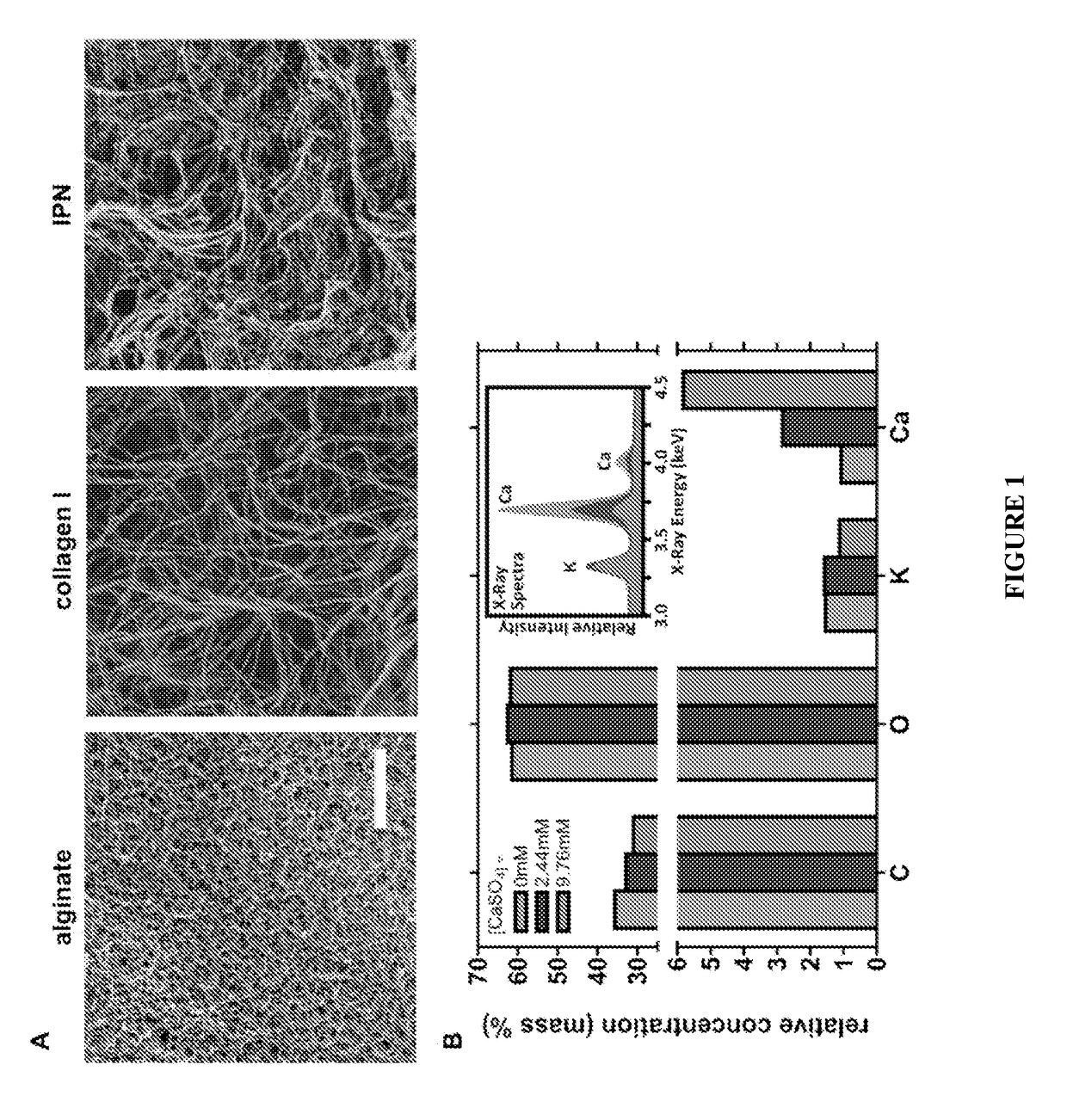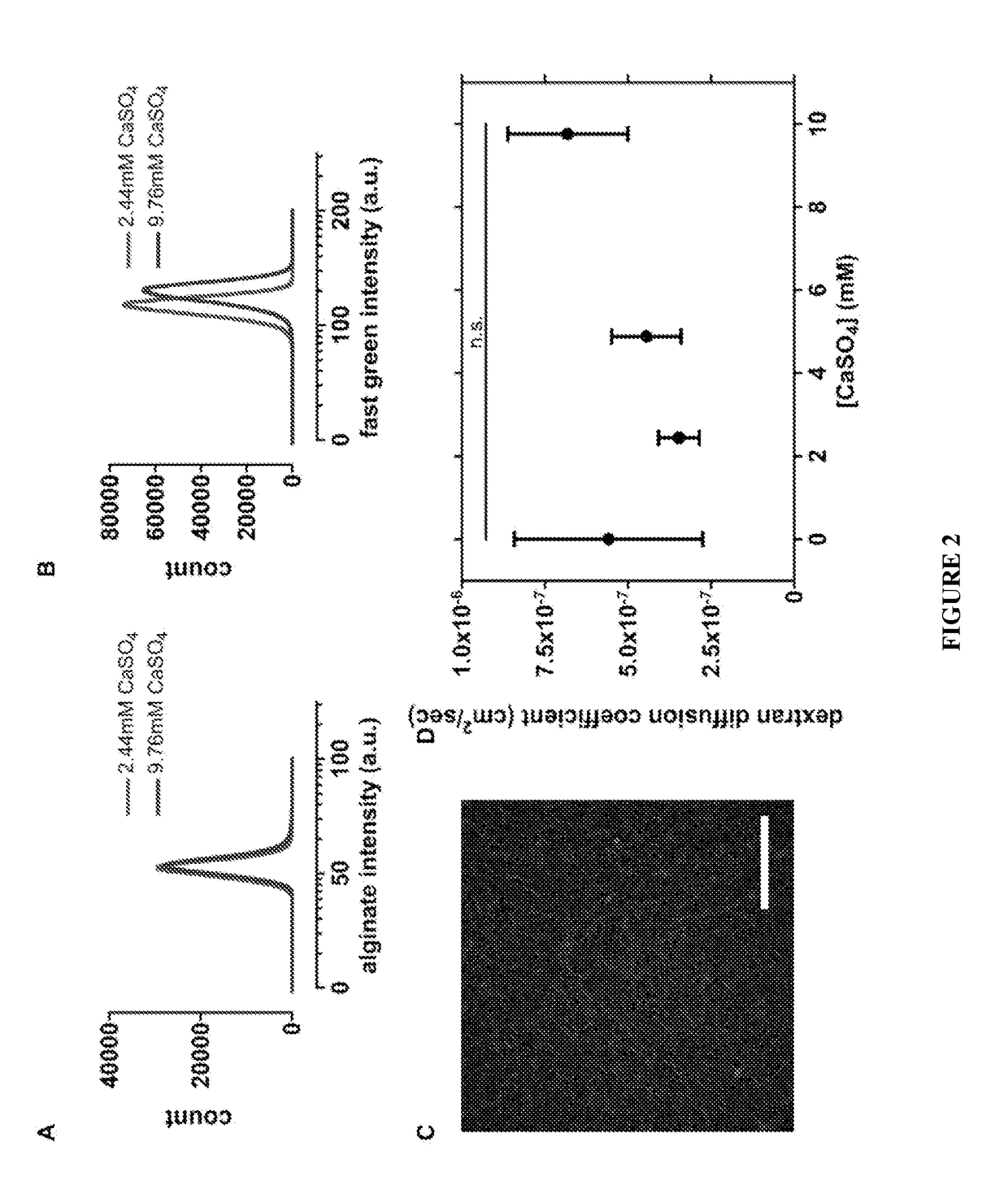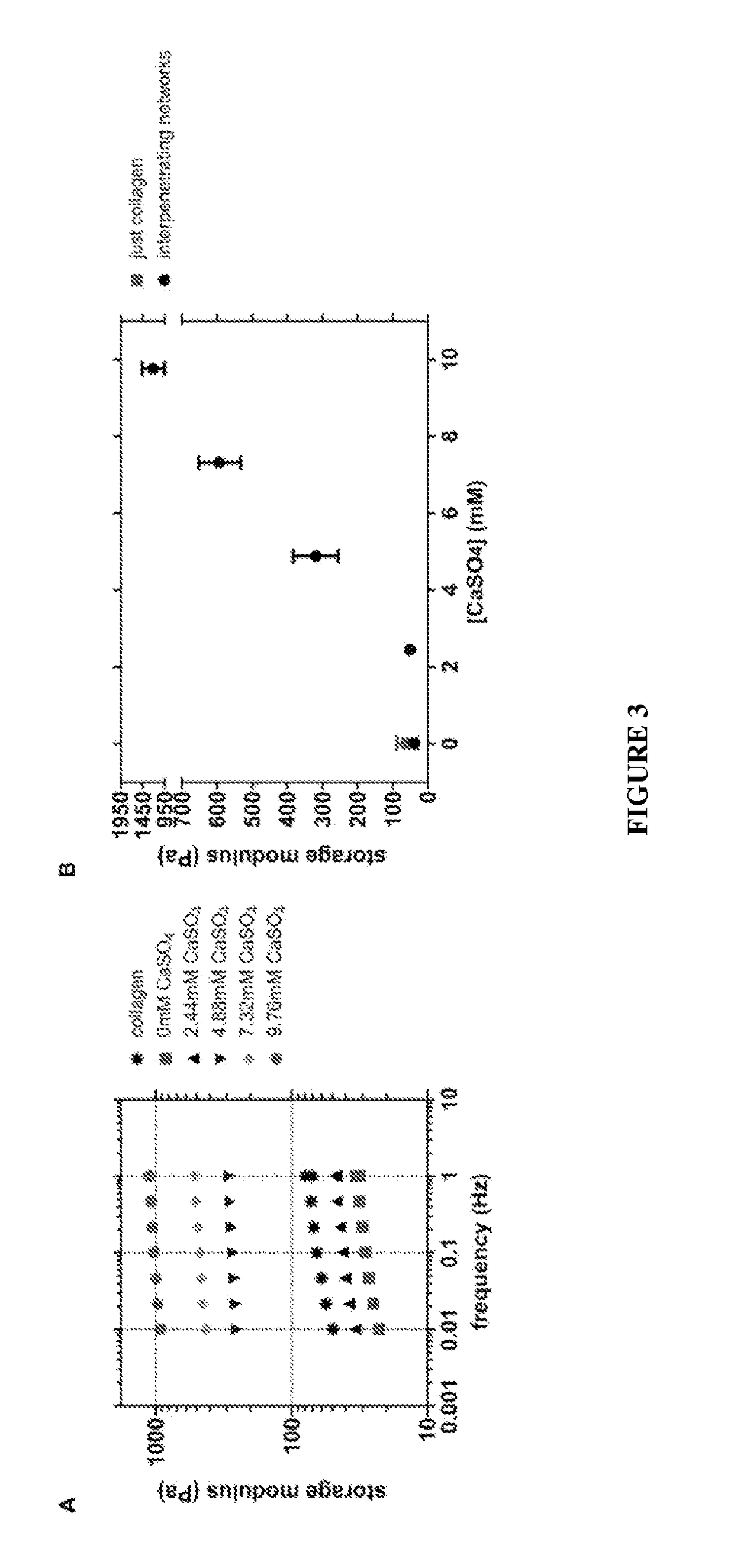Interpenetrating network hydrogels with independently tunable stiffness
a network hydrogel and independent tunable technology, applied in the field of hydrogels, to achieve the effect of promoting tissue healing, reducing adverse side effects, and reducing bulk stiffness
- Summary
- Abstract
- Description
- Claims
- Application Information
AI Technical Summary
Benefits of technology
Problems solved by technology
Method used
Image
Examples
example 1
rosslinking Controlled Gel Mechanical Properties Independent of Gel Structure
[0129]The microarchitecture of the alginate / collagen-I interpenetrating networks was assessed by scanning electron microscopy (SEM). SEM of hydrogels composed entirely of 0.5 mg / ml of alginate had an interconnected nanoporous scaffold structure (FIG. 1A). SEM of hydrogels composed entirely of 1.5 mg / ml collagen-I had a highly porous, randomly organized fibrillar network (FIG. 1A). SEM of the alginate / collagen-I interpenetrating networks had a true interpenetration of both components, with an interconnected nanoporous alginate mesh fully intercalated by multidirectional collagen-I fibrils (FIG. 1A). The dehydration and drying steps used to prepare the samples for SEM can cause shrinkage and consequent collapse of the porous structure of the hydrogels. However, since all samples were processed simultaneously and in the same fashion, these effects were expected to be similar across the different conditions ana...
example 2
ts Morphology Varied with IPN Moduli
[0134]Human adult dermal fibroblasts isolated from the dermis of healthy non-diabetic donors were subsequently encapsulated within these alginate / collagen-I interpenetrating networks to examine the impact of gel mechanical properties on the cells' biology. Fibroblasts exhibited an elongated, spindle-like phenotype after a few hours of culture in the gels of lowest storage modulus (FIG. 4A). These softer matrices collapsed after a few days of culture, suggesting that the encapsulated cells were exerting traction forces on the matrix, contracting it and crawling out of hydrogel (FIG. 8A). In IPNs of increased stiffness, fibroblasts exhibited a spherical cell shape (FIG. 4A), up to at least 5 days of culture. Cells within these stiffer matrices failed to form stress fibers, as shown by confocal microscopy of F-actin staining of cryo sections. These effects were not due to the higher concentrations of Ca+2 in the stiffer interpenetrating networks, as ...
example 3
ling-Related Genetic Programs Varied with IPN Moduli
[0137]Experiments were performed to determine if the changes in cell spreading due to stiffness were accompanied by different gene expression profiles. Real-time reverse transcription polymerase chain reaction (RT-PCR) was used to analyze the expression of a panel of 84 genes important for each of the three phases of wound healing, including extracellular matrix remodeling factors, inflammatory cytokines and chemokines, as well as key growth factors and major signaling molecules. The gene screening revealed 15 genes displaying at least 2-fold difference in gene expression between dermal fibroblasts encapsulated in interpenetrating networks with storage moduli of 50 versus 1200 Pa (FIG. 5A). The expression of 11 genes was up-regulated in 1200 Pa versus 50 Pa gels, and expression of 4 genes was down-regulated in 1200 Pa versus 50 Pa gels. The genes which were down-regulated were chemokine ligand 2 (CCL2), colony stimulating factor 2 ...
PUM
| Property | Measurement | Unit |
|---|---|---|
| storage modulus | aaaaa | aaaaa |
| storage modulus | aaaaa | aaaaa |
| molecular weight | aaaaa | aaaaa |
Abstract
Description
Claims
Application Information
 Login to View More
Login to View More - R&D
- Intellectual Property
- Life Sciences
- Materials
- Tech Scout
- Unparalleled Data Quality
- Higher Quality Content
- 60% Fewer Hallucinations
Browse by: Latest US Patents, China's latest patents, Technical Efficacy Thesaurus, Application Domain, Technology Topic, Popular Technical Reports.
© 2025 PatSnap. All rights reserved.Legal|Privacy policy|Modern Slavery Act Transparency Statement|Sitemap|About US| Contact US: help@patsnap.com



